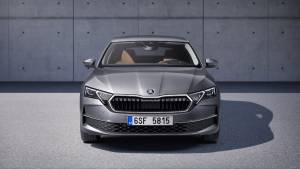Tata to bring the Safari nameplate back in all-new 7-seater SUV
Tata Motors has decided to bring back the revered Safari nameplate for its upcoming seven-seater SUV. The first generation Tata Safari was launched in India in 1998 and soon became a darling of the masses who wanted a full size luxury SUV that could seat more than 5 passengers. The Safari eventually became a cult item, before more stringent safety and emission regulations brought an end to its run. In more recent years the last few of the lot were retuned and sold to the Indian Army. Now however there is a whole new Safari in store.
Expected to launch in India on January 26, the SUV was being called the Gravitas so far and was even showcased as such at the 2020 Auto Expo where it made its debut. Bookings for the new Safari begin soon and the car will be showrooms in January itself.

The Safari is a derivative of the Harrier but is around 62mm longer, incorporating a stepped roof and a reworked rear section to accommodate the third row of seats. The section aft of the B-pillar is longer and boxier, with lightly reworked tail lamps and a bump on the roof, to allow for more headspace in the third row. The width(1894mm) and wheelbase(2741mm) should remain unchanged, although the new car should be a bit taller with the stepped roof nad tiered seating, much like its predecessor. The interiors are expected to feature a lighter beige upholstery, and in keeping with the new name, the best seats in the house should be the second row of captain's chairs. Although, a bench on the mid to lower-spec versions are a possibility. We expect boot space to shrink considerably from the 425l of the Harrier with the last row up, but with these folded away, there should be more on offer than the Harrier.

The new SUV is also expected to come with the same 2.0-litre FCA-sourced Multijet diesel engine, which Tata calls Kryotec. In this case, we think the more powerful 172PS and 350Nm version will be offered, in its BSVI compliant guise. The engine is mated to a 6-speed manual and a six-speed automatic gearbox in the Harrier and those are expected to be seen in the Gravitas too. Also, the traction-based drive modes that the Harrier first introduced to the Indian market should be carried over here too, although there is still no confirmation of a full-fledged 4x4 model like the original Safari. The Gravitas should come with a more extensive list of features including an electronic parking brake, and Tata Motor's suite of connected-car features. The larger panoramic sunroof may be replaced with a smaller one to accommodate the new roof design.
The rest of the features list should be a straight lift from that of the Harrier. Notable here should be auto headlamps and wipers, an 8.8-inch touchscreen with Android Auto/Apple Carplay, JBL speakers, 6-way powered driver's seat, tilt and telescopic steering, auto-dimming inner rear-view mirror and so on. Safety features should include upto 6 airbags, corner function fog lamps, hill descent control, hill-hold function, ESC, ABS and so on.
Given its relation to the Harrier, The Tata Safari will also be based on the Optimal Modular Efficient Global Advanced Architecture (Omega arc) from Tata Motors. We already know that this architecture is derived from Jaguar Land Rover's entry-level D8 SUV platform, variations of which supported cars like the pre-facelift Land Rover Discovery Sport, Jaguar E-Pace and the last-gen Range Rover Evoque. Tata's version involves the use of cheaper materials and components to keep costs down. The Tata platform is based on a steel structure unlike JLR's aluminium one and also incorporates more affordable suspension tech like a rear torsion beam instead of a multi-link set-up. Know more about Omega Arc here.
The Tata Safari is expected to be priced at a premium of Rs 1 to 1.5 lakh over an equivalent Harrier. Prices for the Harrier currently start from Rs 13.84 lakh, going up to Rs 20.30 lakh, ex-showroom. The Tata Gravitas will compete with the likes of the MG Hector Plus and the upcoming new-gen Mahindra XUV500.
Starts Rs 14.99 Lakhs
1956cc
Automatic
170
350
-NA-
-NA-
1998cc
Automatic
300
400
-NA-
Starts Rs 71.38 Lakhs
2995cc
Automatic
340
450
-NA-
Starts Rs 12.23 Lakhs
2179cc
Automatic
140
320
-NA-
Starts Rs 12.9 Lakhs
1496cc
Manual
143
250
15.8 Kmpl












